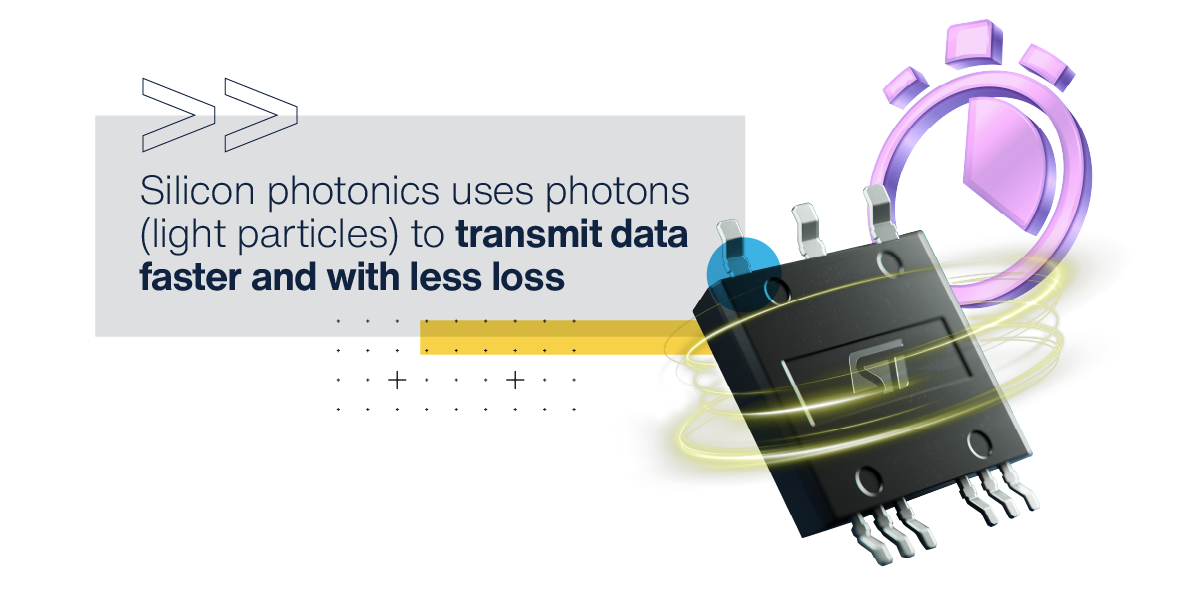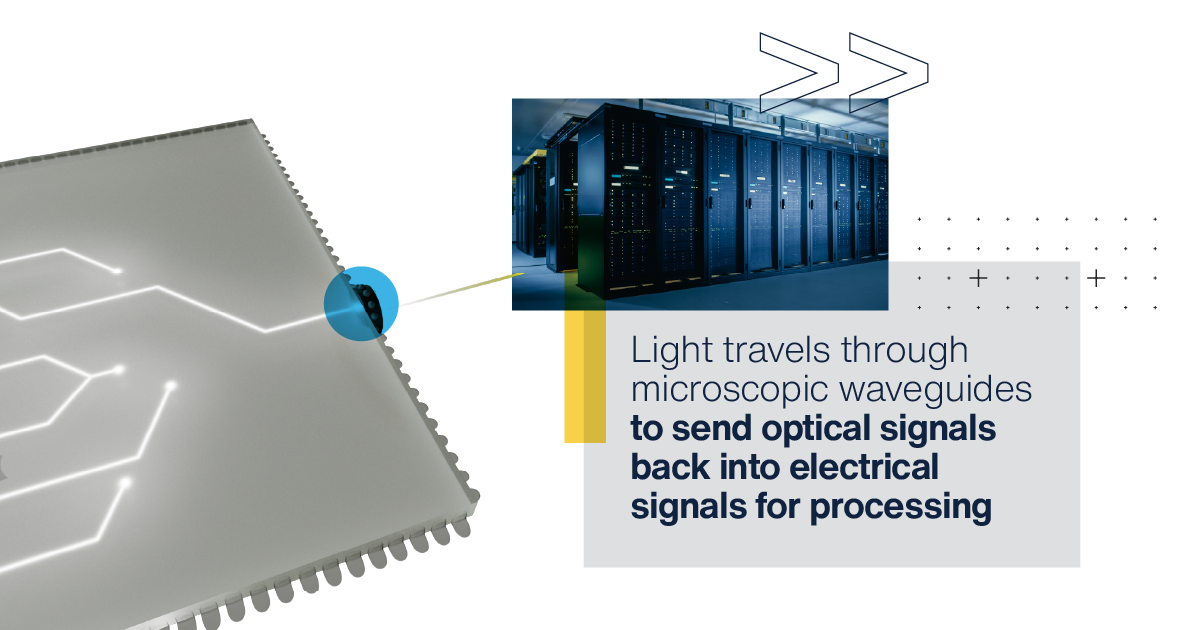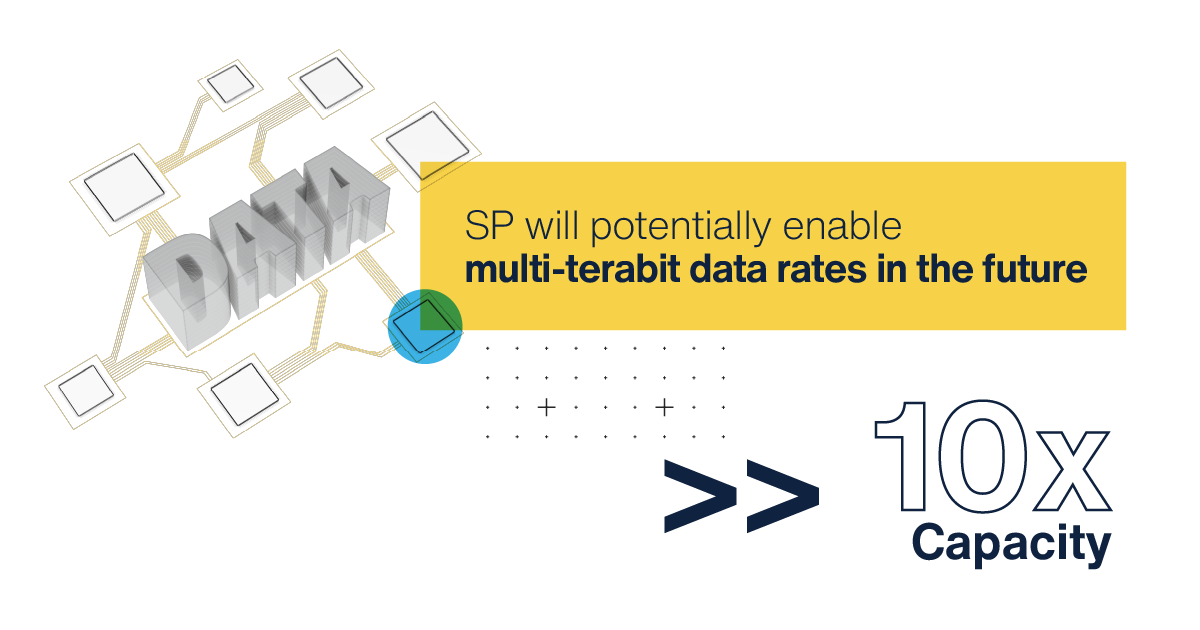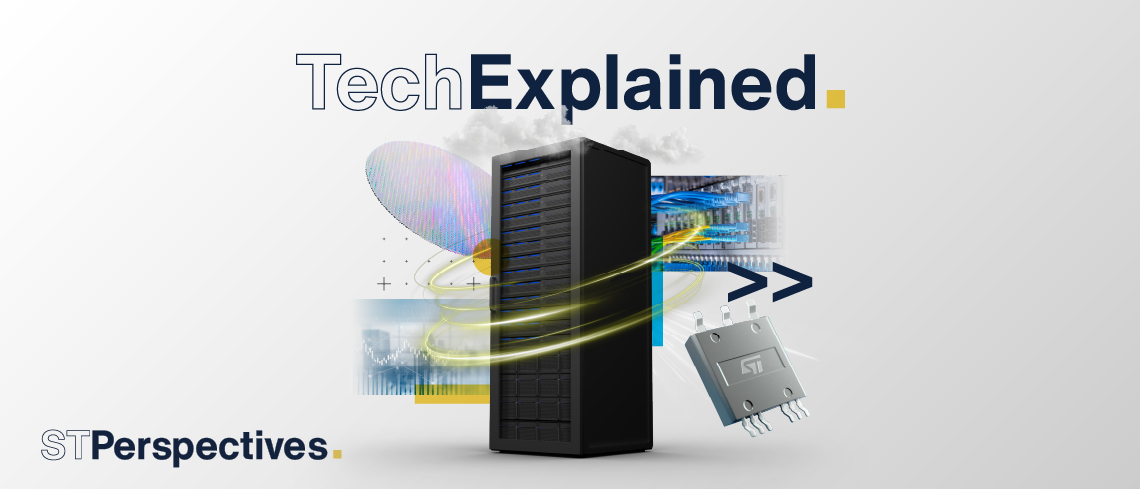In today’s data-driven world, the demand for higher data transfer, speed, performance and energy efficiency is growing at an unprecedented pace. Silicon photonics combines the speed of light with the scalability of silicon manufacturing to meet these demands. What exactly is silicon photonics, how does it work – and crucially, why is it becoming so important? This article explores the fundamentals, applications and impact of silicon photonics.
The magic of light on a chip
At its core, silicon photonics involves integrating optical components onto silicon chips to generate, manipulate, and detect light for data communication. Unlike traditional electronics that rely on electrons to carry information, silicon photonics uses photons (light particles) that travel faster and carry more data with less energy loss. This fundamental difference enables data to be transmitted at much higher speeds and over longer distances with greater efficiency.

What makes silicon photonics particularly powerful is its compatibility with existing semiconductor manufacturing techniques. Optical and electronic components can coexist on the same silicon chip by leveraging mature CMOS fabrication processes. This integration allows for mass manufacturing of optical components that were once bulky and expensive and dramatically lowers production costs.
How it works
Silicon photonics converts electrical signals into optical signals and back again, allowing data to be transmitted as pulses of light. A laser generates a near-infrared light which is then modulated by electrical data signals. These modulators encode information into the light stream by altering properties such as intensity or phase.
The modulated light travels through microscopic waveguides etched into the silicon substrate, which guide the light with minimal loss. At the receiving end, photodetectors convert the optical signals back into electrical signals which are translated back to the original data for processing.

These conversion and transmission processes enable silicon photonics to deliver ultra-fast data transfer speeds while maintaining energy efficiency. The ability to integrate these functions on a single chip is a key factor driving its rapid adoption. For instance, STMicroelectronics silicon photonics technologies are already being applied in co-packaged optics for next generation AI and data centers, where optical interconnects deliver data rates above 400 Gbit/s with significantly lower power dissipation than alternative technologies.
Powering the digital backbone
Silicon photonics is being deployed in several critical sectors. In data centers and cloud computing environments (largely driven by AI demand), the technology enables ultra-fast optical interconnects between servers, storage, and networking equipment. This not only increases data throughput but also reduces power consumption and physical space requirements, helping data centers operate more efficiently and economically.
Telecommunications networks also benefit from silicon photonics – by enabling compact, scalable transceivers, silicon photonics supports higher data rates and longer transmission distances over fiber optic networks, for faster internet speeds and more reliable connections.
High-performance computing (HPC) environments, which require rapid data exchange between processors, leverage silicon photonics to achieve low-latency, high-bandwidth communication. This accelerates scientific simulations, artificial intelligence training, and complex data analytics.
Other applications are also beginning to harness silicon photonics. Consumer electronics such as LiDAR sensors for autonomous vehicles, augmented reality (AR) and virtual reality (VR) devices, and advanced imaging systems are starting to integrate silicon photonics for its compact size and high data handling capabilities.
Who’s riding the light wave?
The impact of silicon photonics extends across the entire ecosystem for technology solutions providers for data centers. These companies can build faster, more efficient data centers and telecom equipment. Semiconductor manufacturers gain new opportunities by producing photonic chips using existing fabrication facilities, while researchers and innovators explore new frontiers in integrated optics, quantum computing, and next-generation communications.
Why silicon photonics outpaces electronics
Silicon photonics has several compelling advantages over traditional electronic interconnects.

Optical signals inherently support much higher bandwidths, which should enable multi-terabit per second data rates in the years to come. They also consume significantly less power, reducing operational costs and environmental impact. The integration of optical components on silicon chips allows for compact designs that save space and enable new device form factors. Moreover, the use of established CMOS manufacturing techniques lowers production costs and accelerates time-to-market. Finally, silicon photonics supports dense integration of multiple optical channels, preparing networks for the explosive growth in data traffic expected in the coming years.
Networks of the future
Looking forward, silicon photonics is expected to play a crucial role in enabling the connected networks of the future, edge computing and quantum communications. The industry’s main focus is now on scaling a mature silicon photonics supply chain, from water to packaging, to meet surging data and energy efficiency demands.
Advances in materials science, design automation, and manufacturing processes will continue to improve performance, address energy efficiency needs and reduce costs, making silicon photonics an essential technology for the connected future.
Shaping a connected future
Silicon photonics represents a paradigm shift in data communication by merging the speed of light with the scalability of silicon manufacturing. Its ability to deliver ultra-fast, energy-efficient, and compact optical interconnects is transforming data centers, telecom networks, high-performance computing, and emerging consumer applications.
As data demands continue to soar, silicon photonics offers a scalable, cost-effective solution to meet the connectivity needs of tomorrow’s world. This semiconductor technology is not just changing how information is transmitted; it has the potential to reshape the foundation of our connected future.
- Discover more on ST’s technologies
- Learn more on PIC100, ST’s 1st silicon photonics



